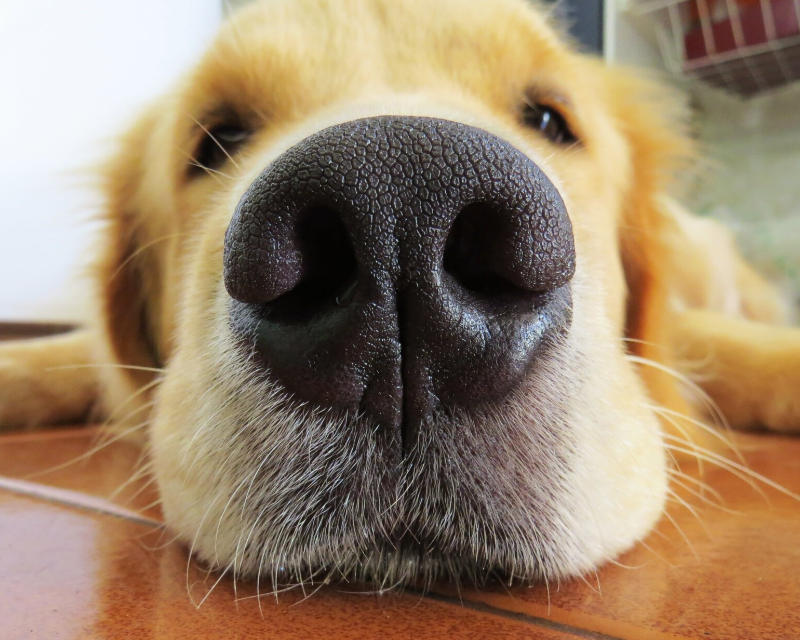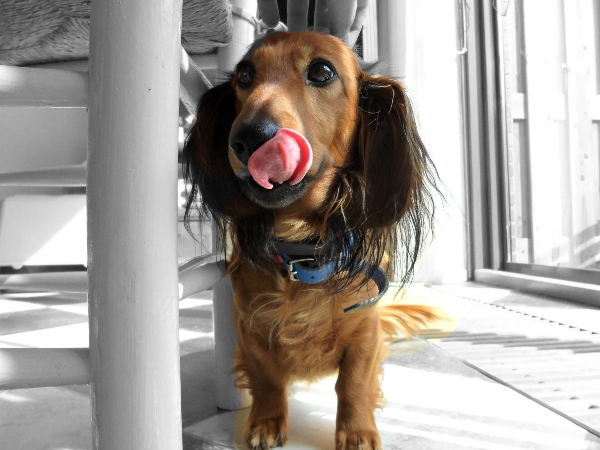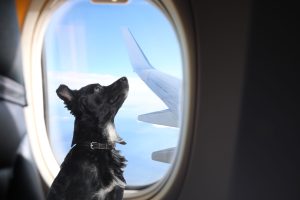Let’s sniff out the reasons for a dog’s wet nose:
Dogs’ noses are wet mostly because they secrete mucus that improves their sense of smell. However, there are several other factors to look into. Dogs can also cool off by sweating through their paws and noses. And as a dog owner, you’re probably well aware that dogs lick their noses often.
So, let’s break down the reasons your dog’s nose might be wet:
Saliva: You’ve probably seen your dog swirl their tongue across their lips and nostrils, which causes that wetness. They could be cleansing their noses or tasting the smell particles that have clung to their nostrils.
Mucous: Your dog’s nose produces and releases a tiny layer of mucus that traps odors and improves their already exceptional sense of smell.
Sweat: Dogs sweat through their noses, which contributes to the wetness. They don’t sweat as much as we do, so this, combined with perspiration from their paws, helps them stay cool.
Other wet stuff: Moisture can be added to a dog’s nose by its surroundings. Dogs enjoy putting their noses in all kinds of damp areas. They put it in their water bowls to drink, in the wet grass to sniff about, and even in the toilet bowl out of curiosity.
What does it mean if your dog’s nose is dry?
Typically, a dry nose isn’t usually a cause for concern. Young dogs with a fondness for licking will have moist noses, but as they become older, their noses tend to dry out. Dryness could indicate that your dog is dehydrated, so make sure he gets lots of water.
If a dog’s nose is warm and dry, you may assume that your dog has a fever. While this can be an indication of a high temperature, it isn’t a reliable strategy to determine whether or not your dog has a fever. However, if your dog’s dry nose is followed by other symptoms like mucus discharge or stomach trouble, you should take him to the vet to rule out any issues.
However, if the dryness is persistent, it could indicate that your dog has a skin condition. A dry nose might be a sign of a larger health problem.
When to worry about your dog’s dry nose?
It’s possible that your dog’s nose is sunburned if it’s dry and cracked. It could possibly be an allergic reaction to their dog food or toxins in your home. While dogs pant to stay cool, it can also be an indication of more serious health problems. Body language can also give you clues about how your dog is feeling, and you should always be on the alert for signs of anxiety from your dog.
What does it mean if your dog’s nose is too wet?
A runny nose can also show that your dog is ill. Dogs, like people, can develop a mucus buildup on their noses or come out of their nostrils, if they develop a nasal infection or upper respiratory infection.
It’s critical to look out for your dog’s nose because it’s such a vital element of how they function. In the nose of a dog, there are around 100 million sensory receptors, compared to five or six million in humans. They can use them for a variety of purposes, from spotting cancer to tracking down criminals.
How to keep a dog’s nose healthy?
Dogs’ noses require little upkeep. If it gets dirty, gently wipe it off and check for symptoms like flaky skin, redness, excess or colored discharge, or sneezing. While a sneeze now and again is perfectly normal, excessive sneezing could indicate that your dog has an allergy or is sick. If you are worried about your dog’s nose, then you should consult with your vet, who diagnose the problem and recommend a treatment.
Some fun facts about a dog’s nose:
When dogs are trying to smell something, their breathing rate increases. To take in more air, they also enlarge their nostrils.
Dogs’ nostrils have slits in them that open more to the side than to the front. This enhances their directional smelling sensitivity.
Dogs are believed to be able to distinguish between 30,000 and 100,000 distinct odors. When compared to our fragrance repertoire, which is just roughly 4,000 to 10,000 scents, that’s a lot!
In the noses of dogs, there are roughly 300 million olfactory receptors as opposed to about 6 million in human noses.
Like a human’s fingerprint, each dog’s nose print is unique.
Air exhales from those slits when a dog inhales, while fresh air and new smells enter from the front. They can smell continuously as a result of this. We can only smell when we inhale the fresh air, not when we exhale.
Humans lack the vomeronasal organ, which is a particular scent-detecting organ found only in dogs. Canines use this organ to detect pheromones released by other animals.
The nostrils of your dog can move independently of each other. This assists them in locating the source of an odor.
The nose of a dog can simultaneously breathe in and out.







